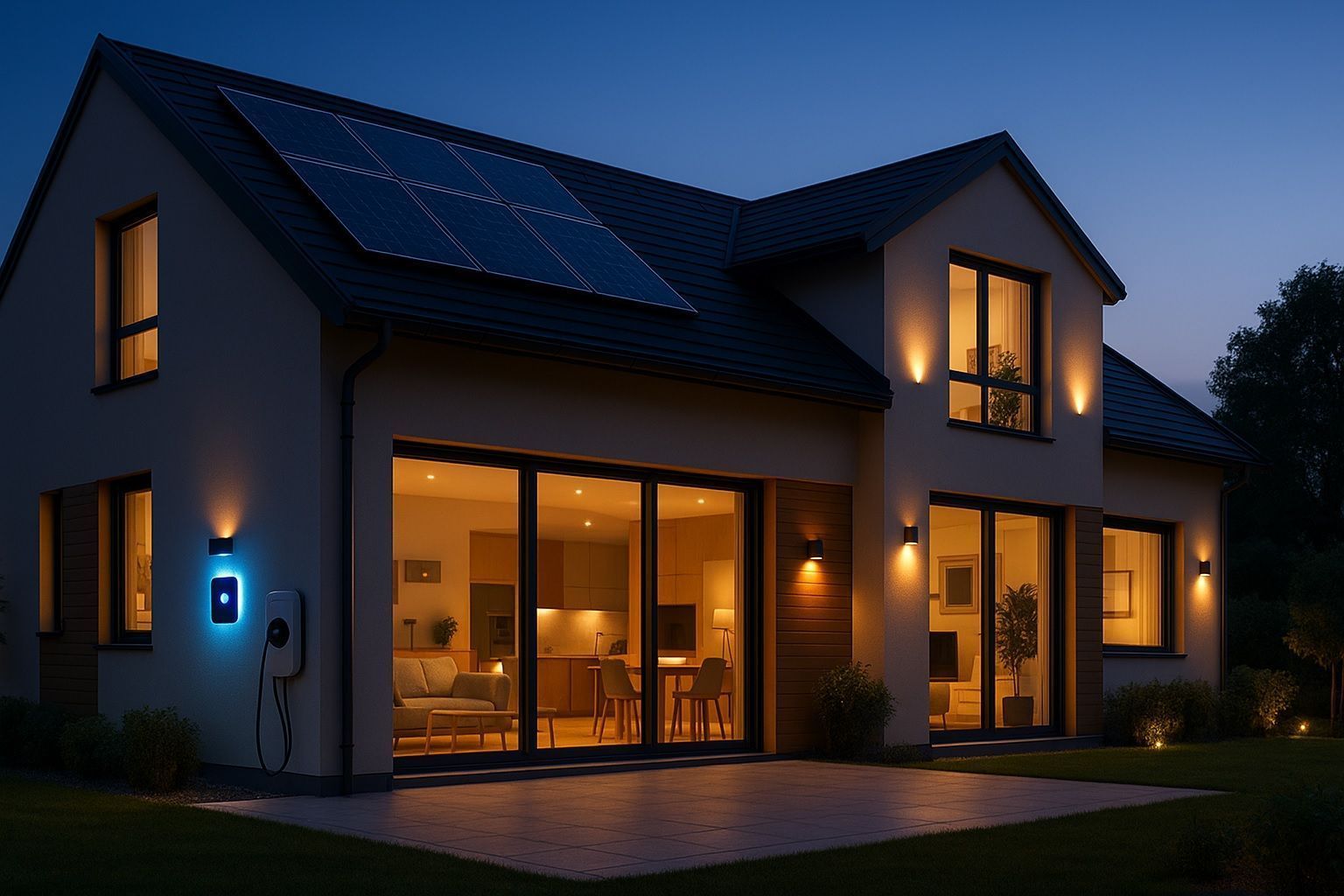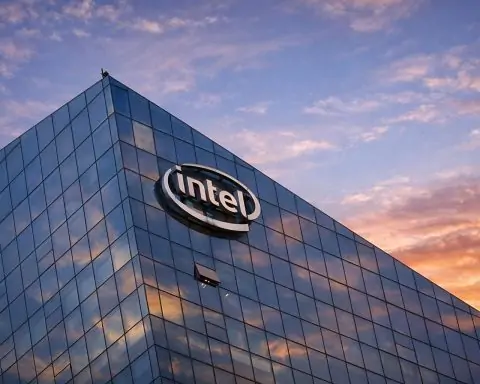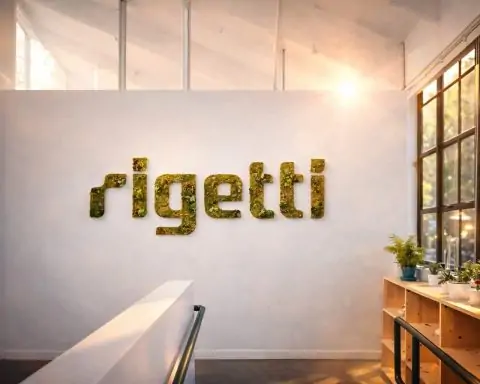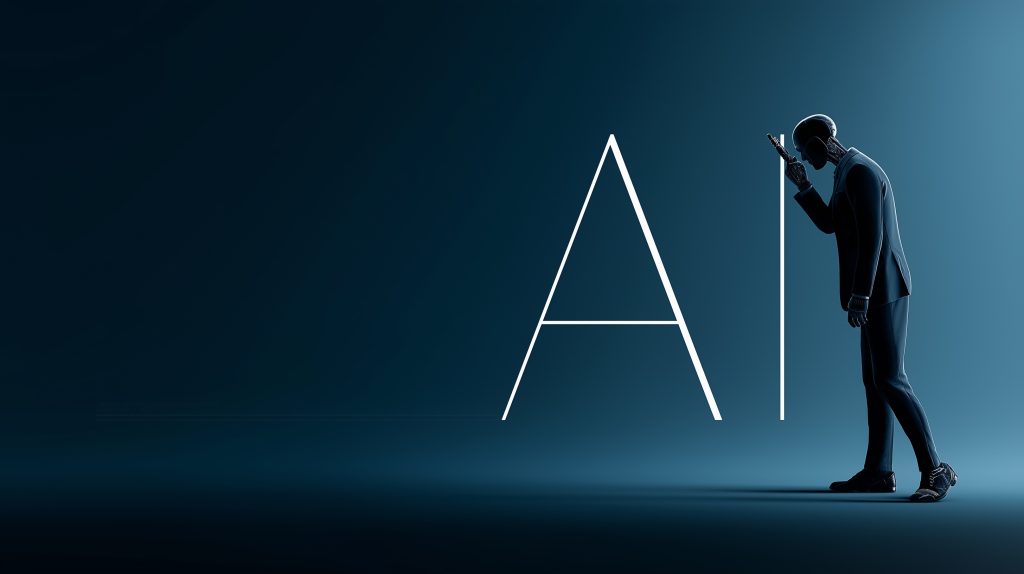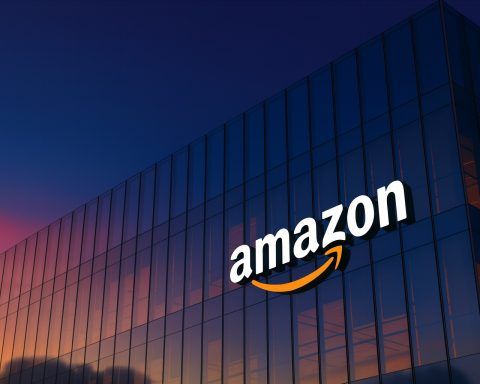- In June 2025 Generac launched ecobee by Generac Smart Thermostat Enhanced with built-in Home Energy Management, promising up to 26% savings on annual heating and cooling and direct coordination with Generac generators and solar batteries.
- In June 2025 Arlo rolled out Advanced Audio Detection for Arlo Secure Plus, enabling cameras and doorbells to recognize sounds such as a person screaming, glass breaking, gunshots, dog barks, and smoke alarms with instant video alerts.
- The Yale Assure Lock 2 Touch, introduced in late spring 2025, uses fingerprint biometric unlocking and disarms the alarm, and integrates via Z-Wave with ADT’s security system.
- Samsung’s Bespoke AI Home Line, announced in late June 2025, includes an all-in-one washer-dryer with a built-in 7-inch display, a WindFree AI air conditioner, and a Bespoke AI fridge with interior cameras, 37-food recognition, and a 9-inch touchscreen.
- Amazon began rolling out Alexa Plus in June 2025, with over a million users already having access and a full release to all Echo devices planned by summer’s end.
- Google integrated its Google Home software hub into over 40 million devices by late June 2025, effectively turning them into Matter controllers and Thread border routers.
- MediaTek and Google announced a Trinity chipset in 2025 that combines Wi‑Fi, Bluetooth LE, and Thread radios on a single chip, making Matter support cheaper and easier by default.
- Allegion completed its June 2025 acquisition of Elatec GmbH to bolster smart-building access and digital locks for enterprise deployments.
- KORE completed its purchase of Ericsson’s IoT connectivity platform in June 2025, making KORE one of the world’s largest IoT management services for businesses.
- Xiaomi unveiled its first electric vehicle, the YU7 SUV, in late June 2025, pairing the car with Xiaomi’s AIoT smart-home ecosystem so the car can control home devices.
The past two months have been buzzing with smart-home breakthroughs. From next-gen thermostats and AI-powered appliances to tighter security and evolving ecosystems, June and July 2025 saw a flurry of smart-home product launches, strategic moves, and debates. Industry giants and startups alike made headlines with new devices and features, analysts painted an upbeat market outlook, and experts weighed in on where home automation is headed. At the same time, ongoing issues – from security flaws to privacy laws and device compatibility – kept the sector on its toes. Below is a comprehensive roundup of the key developments shaping the smart-home landscape in early Summer 2025.
Notable Smart-Home Device Launches & Updates
- Climate Control & Energy Management: Generac’s ecobee Smart Thermostat Enhanced – In a bid to make homes more resilient and efficient, Generac launched the “ecobee by Generac” Smart Thermostat Enhanced with built-in Home Energy Management. This new thermostat integrates seamlessly with Generac’s home backup generators and solar batteries to optimize HVAC use and backup power coordination [1]. Thanks to advanced occupancy sensors and smart automation, it promises up to 26% savings on annual heating/cooling costs [2]. Available through Generac dealers from June 2025, the thermostat eliminates extra hardware (like separate load controllers) by coordinating directly with Generac’s systems, “adapting automatically to homeowners’ energy needs” as Generac puts it. The launch comes as power outages and energy costs spike (Americans weathered 1.5 billion hours of outages in 2024), underscoring demand for solutions that blend comfort with backup power [3].
- Home Security & Surveillance:Arlo’s AI Guard – Leading security brand Arlo rolled out a smart software upgrade in June that takes home monitoring to the next level. Arlo added “Advanced Audio Detection” AI to its Arlo Secure Plus plans, enabling its cameras and doorbells to recognize critical sounds – from a person screaming or glass breaking to gunshots, dog barks, and even smoke/CO alarms [4]. When any of these audio cues are detected, subscribers get instant alerts with video, so they can respond in real time. “Arlo continues to push the boundaries of what’s possible in home security with our relentless focus on industry-first innovations,” said CEO Matthew McRae, emphasizing the goal of a “smarter, more personalized security experience” powered by AI [5]. This audio sensing joins Arlo’s existing person, vehicle, and package detection features, showcasing how AI is making security cameras more proactive. (Across the industry, established players are innovating too – ADT, for instance, recently partnered with Yale to launch a biometric smart lock that uses your fingerprint to simultaneously unlock the door and disarm the alarm. The Yale Assure Lock 2 Touch, introduced in late spring, integrates via Z-Wave with ADT’s new security system so a single touch can let you in and turn off the alarm [6]. It’s the first lock of its kind, reflecting the trend toward deeper integration between smart locks and alarm systems.)
- Smart Appliances & AI Homes: Samsung’s “Bespoke AI” Home Line – The era of intelligent appliances has arrived. In late June, Samsung unveiled a 2025 lineup of AI-powered home appliances designed to automate chores and serve as smart home hubs. Debuting first in Asia, the new Bespoke AI series includes an all-in-one washer-dryer combo with a built-in 7-inch touch display, a “WindFree” AI air conditioner, and smart refrigerators – all infused with Samsung’s AI Home platform [7]. These appliances do more than their basic functions: the washer-dryer’s AI can sense load size, fabric type, and soil level to automatically adjust water, detergent, and cycle settings for optimal cleaning [8]. The flagship Bespoke AI fridge features interior cameras and food-recognition AI – it can identify 37 types of foods, track expiration dates, and suggest recipes, and it boasts a 9-inch touchscreen that doubles as a family hub for controlling other smart devices [9]. Many of the devices include integrated voice assistants (Samsung’s upgraded Bixby) and energy-saving intelligence; for example, the AI AC learns your usage patterns and adjusts compressor speed to cut cooling energy use by ~30% [10]. With these launches (rolling out globally through July), Samsung is “pushing the boundaries of AI-driven innovation [and] smart home connectivity”, turning formerly “dumb” appliances into connected, interactive home robots.
- Entertainment & Voice Assistants:Alexa Levels Up, Apple Stays Software-Focused – Voice-controlled helpers are getting smarter. Amazon began rolling out its next-gen Alexa Plus to early users in June, after a late spring launch of the AI-overhauled assistant. Powered by generative AI, Alexa+ is more conversational and context-aware, able to handle complex requests and multi-device actions with ease. Amazon reports over a million users already have access to Alexa Plus (up from “hundreds of thousands” a month prior) as it ramps up for a full release to all Echo owners by summer’s end [11]. This “souped-up” Alexa can remember details you tell it, carry on free-flowing chats, and even proactively suggest routines – part of Amazon’s strategy to reinvigorate its popular voice platform with AI smarts. In contrast, Apple and Google did not debut new smart-home hardware in June–July, but instead delivered updates aimed at making their ecosystems more intelligent and cohesive. Apple’s Worldwide Developers Conference (WWDC) in June showcased “AI-centric features for smart home integration” baked into upcoming iOS/iPadOS updates [12] – think smarter Siri shortcuts and HomeKit automations benefiting from on-device AI. Google similarly used the summer to refine its software: for example, Google’s Home app gained enhancements and Google pushed new developer tools (APIs) to encourage third-party apps and devices to tie into Google Home more deeply (see below). While no major new Apple or Google smart-home gadgets hit shelves mid-year, their focus on AI and interoperability hints at bigger ecosystem plays coming soon.
- Connected Cars Meet Connected Homes:Xiaomi’s IoT Expansion – One notable trend blurred the line between home and automobile. Chinese tech giant Xiaomi – better known for phones and smart home gadgets – made a splash in late June by unveiling its first electric vehicle (the Xiaomi YU7 SUV) alongside a slew of new smart devices. Uniquely, the YU7 EV is tightly integrated with Xiaomi’s smart-home platform, essentially turning the car into a rolling extension of the smart home [13]. Owners can control home IoT appliances from the car’s dashboard and vice versa, illustrating the convergence of home automation and automotive tech. “Xiaomi is expanding far beyond mobile, and this event solidifies its push into a broader hardware ecosystem,” a Gizmochina analyst noted, as the company linked its smart wearables, smart home devices, and now vehicles under one AIoT umbrella [14]. While Apple and Google stayed hardware-light this season, Xiaomi’s bold foray (which also included new wearables like the Smart Band 10 and even prototype AR smart glasses) underscores how consumer IoT ecosystems are extending into every facet of daily life, cars included. Industry watchers expect more car-to-home integrations ahead as smart homes don’t stop at the front door.
Market Outlook: Growth on the Rise, AI in the Mix, and Ecosystems Evolving
Even as cool new gadgets grab headlines, analysts and executives have been taking stock of the bigger picture – and the consensus is that the smart home / IoT market’s growth shows no signs of slowing. Fresh research and forecasts released in late June 2025 confirm a robust upward trajectory for connected tech:
- Surging Adoption & Spending: The global Internet of Things market (which includes smart-home devices) is on track to nearly double in spending within a few years. Gartner’s latest IoT forecast projects worldwide IoT outlays will grow from about $546 billion in 2022 to roughly $991 billion by 2028, equating to ~10% compound annual growth [15]. By application, consumer electronics (like home automation gadgets) still make up the largest chunk of IoT deployments, though the fastest growth is happening in automotive and transportation IoT as cars get ever smarter [16]. The sheer number of connected devices is climbing fast as well – industry analysts estimate 16.6 billion active IoT devices at the end of 2023, heading to about 18.8 billion by end of 2024 (13% year-over-year growth) [17]. Extrapolating that trend suggests we’ll surpass 20 billion connected devices in 2025, en route to 30+ billion by 2030. Notably, Asia-Pacific is the fastest-growing region for IoT adoption (thanks to massive investments in smart infrastructure by China, India, etc.), though North America still accounts for the greatest IoT spending share (about 42% in 2023) [18]. In short, the smart devices boom is charging ahead – with billions more gadgets coming online and hefty spending to match, as connected tech permeates homes, vehicles, and industries worldwide.
- AI + IoT = “AIoT”: A dominant theme in 2025 is the fusion of artificial intelligence with smart devices, often dubbed “AIoT.” Many of the latest home-automation products explicitly bake in AI capabilities – from cameras with on-device facial recognition to thermostats that learn your schedule. Gartner predicts that by 2025, over 95% of new IoT products for enterprises will include some form of built-in AI or analytics at the edge, up dramatically from <30% just a few years ago [19]. We’re seeing this play out in consumer tech as well: for example, the Arlo and Alexa upgrades above leverage cloud AI to add intelligence to existing devices, and Samsung’s AI appliances use machine learning to optimize appliance settings and energy use. The explosion of generative AI is also streamlining how IoT products are developed – Gartner noted that by 2025 about 80% of IoT product development may involve AI-assisted coding and testing, speeding up innovation [20]. All signs point to AI and IoT evolving hand-in-hand: smart-home gadgets are increasingly expected not just to connect, but to “think” and make predictive decisions. This trend was underscored by broader tech news in June when Nvidia (a key maker of AI chips) briefly became the world’s most valuable company, as investors bet on surging demand for AI hardware to power everything from data centers to intelligent cameras [21]. For consumers, the upshot is that devices like security cams, speakers, and appliances will keep getting more autonomous and personalized, as voice assistants get savvier and home systems learn to anticipate our needs.
- Matter and the Quest for One Smart Home:Interoperability – the ability for devices from different brands to seamlessly work together – remained a hot topic this summer. The new Matter standard (backed by Apple, Google, Amazon, Samsung and others) aims to break down the walls between smart-home ecosystems, and momentum around Matter continued to build in June/July. Manufacturers rolled out updates to make existing gadgets Matter-compatible: for instance, router and hub makers Eero and Aqara issued firmware upgrades so their devices can serve as Thread border routers and multi-protocol hubs, enabling consolidated control of Zigbee, Thread, Wi-Fi devices under one network [22]. On the consumer side, sources indicate shipments of Matter-capable products accelerated through mid-2025 (exact figures pending), as more lighting, thermostat, and camera products earn the Matter badge. Meanwhile, the major platform providers doubled down on supporting this unified future. Google announced in late June that it has integrated its Google Home software “hub” into over 40 million devices – including Google Nest smart speakers/displays, Chromecast dongles, Android TVs, and even some partner TVs – effectively turning them into Matter controllers and Thread border routers for users [23]. This greatly expands the reach of Matter in households, since many people already own a Matter-capable hub without knowing it (e.g. a Nest Hub or recent Chromecast). Google, Apple, and Samsung also teamed up on improving Matter’s reliability. In fact, Google revealed it’s investing additional resources to boost Matter’s quality and streamline certification, working with the Connectivity Standards Alliance so developers can certify a device for multiple ecosystems more easily [24]. And on the silicon front, chipmakers are pitching in: MediaTek and Google partnered on a new “Trinity” chipset that combines Wi-Fi, Bluetooth LE, and Thread radios on one chip, making it cheaper and simpler for future gadgets to include Thread/Matter support by default [25]. All told, the industry is pushing hard for a more unified smart home, addressing the lingering frustration that consumers need multiple apps and hubs to control different gadgets. The road hasn’t been perfectly smooth – Matter’s initial rollout had some hiccups and still lacks certain device types – but the consensus is that multi-protocol, cross-brand compatibility is the future. As one Google smart home director put it, the goal is to make the connected home “seamless… with less work” for users and developers alike [26].
- Commercial & Enterprise IoT Moves: Smart-home tech isn’t just for individual homes; big companies are also making plays to automate buildings and infrastructure. The summer saw notable mergers and partnerships in the IoT realm, as firms seek to offer more comprehensive solutions. For example, in June security hardware giant Allegion finalized its acquisition of Elatec GmbH, a German maker of RFID/Bluetooth IoT readers, in a move to bolster smart building access and digital lock systems [27]. Industry analysts noted this gives Allegion (known for Schlage locks) a stronger foothold in the wireless access control market – think office badges, apartment entry systems, hotel locks – highlighting the growing focus on enterprise-level building automation. Telecom/IoT provider KORE also completed its purchase of Ericsson’s IoT connectivity platform this period, instantly making KORE one of the world’s largest IoT management services for businesses [28]. And chipmaker Nordic Semiconductor grabbed an IoT software startup (Memfault) to offer cloud-based device monitoring with its chips [29]. These deals underscore how the IoT ecosystem is consolidating and maturing: companies realize that to support millions (and soon billions) of devices, they need end-to-end platforms (from hardware to cloud) and a broad portfolio of capabilities. Even traditional home-security providers are pivoting to modern platforms – ADT’s new ADT+ system (launched in late 2024) continued to evolve in mid-2025, integrating not just cameras and alarms but also smart locks, garage controllers, and voice assistants into a unified, app-controlled offering (as seen with the ADT/Yale fingerprint lock tie-in mentioned above). And on the really futuristic end, one startup announced plans to launch the world’s first Bluetooth-capable satellites by July 2025 to pick up signals from remote IoT sensors on Earth [30] – an experimental idea to extend “the Internet of Things to connect everywhere,” even in wilderness areas with no cell coverage. From smart skyscrapers to satellites, home-automation tech is scaling up to enterprise and even orbital levels.
Challenges & Controversies: Security Flaws, Privacy Concerns, and Standard Spats
No technological leap comes without its headaches, and the smart-home boom is no exception. Summer 2025 brought sharp reminders of the security and privacy risks inherent in all these connected devices – as well as efforts by lawmakers and industry groups to tackle them:
- IoT Security Under Scrutiny: A report released in June sounded alarms about the surge in vulnerabilities across IoT and smart-home devices. Cybersecurity firm Forescout’s 2025 Device Risk Report found that the average risk score of connected devices shot up 15% in the past year, with network equipment and IoT gadgets now more prone to serious exploits than traditional PCs [31]. Disturbingly, routers and smart hubs – the very devices that tie our homes together – account for over 50% of critical exploitable vulnerabilities identified on corporate networks [32]. Many are running outdated firmware and sit exposed on the network perimeter, making them juicy targets. Common consumer IoT products like security cameras, network video recorders, smart doorbells, and even internet-connected appliances also remain high-risk, often because they ship with default passwords or unpatched software [33]. These findings reinforce the importance of basic security hygiene (changing default creds, applying firmware updates) and have prompted calls for manufacturers to build “security by design” – such as requiring unique passwords and providing update support for devices. The stakes are especially high for certain categories: Forescout noted a rise in vulnerabilities in healthcare IoT like smart infusion pumps and imaging machines, where exploits could literally be life-threatening [34]. With high-profile smart device hacks still making news (from hacked baby monitors to hijacked security cams), trust in smart-home tech hangs on the industry’s ability to plug these holes. Encouragingly, regulatory pressure is mounting (particularly in Europe’s forthcoming Cyber Resilience Act, which will mandate strict cyber safeguards for IoT products). Device makers are responding – for instance, new IoT chip platforms launched in June now embed hardware encryption and secure boot features to comply with upcoming EU and U.S. security rules [35]. The message is clear: as our homes fill with sensors and cameras, security can’t be an afterthought, and mid-2025 saw a concerted push to harden the defenses of smart gadgets.
- Privacy and Transparency: The always-listening, always-watching nature of home IoT devices has long raised privacy flags, and 2025 has lawmakers stepping in. In late June, the U.S. House of Representatives overwhelmingly passed the Informing Consumers About Smart Devices Act, a bipartisan bill aimed at ensuring buyers know when a product might be spying on them. Specifically, the act will require smart device manufacturers to clearly disclose – before purchase – if a gadget has a built-in camera or microphone [36]. Many consumers don’t realize, for example, that a new smart TV or even a smart fridge might contain a microphone. Under the pending law, if it passes the Senate, such devices (except obvious ones like smartphones or webcams) must carry a conspicuous label or notice about any recording components. The Federal Trade Commission would enforce this as a truth-in-advertising issue [37]. Lawmakers argue this is a common-sense step for privacy: “People deserve to know if the toaster they’re buying can listen or watch them,” as one co-sponsor quipped. Beyond legislation, tech companies themselves are touting privacy features as a differentiator – for instance, Apple at WWDC emphasized that its new smart-home integrations leverage on-device processing to keep data private, and Arlo’s CEO similarly noted the company’s commitment to user privacy [38]. Despite these assurances, incidents still pop up (e.g. reports of smart speakers accidentally recording conversations). The summer’s developments show a growing consensus that transparency is key: consumers should be informed and in control of the data their smart homes collect. Expect to see more privacy labels, opt-out features, and perhaps even “privacy-certified” IoT products in the near future as the issue gains traction.
- Standards Spats & Compatibility Issues: Finally, no smart-home roundup is complete without addressing the interoperability wars. While the new Matter standard has been a bright spot (as discussed, major players are rallying around it), the transition hasn’t been entirely smooth. Early adopters have reported some devices struggling to stay connected or missing advanced features when run on Matter – a reality not unexpected for a 1.0 standard. That’s why in June, Google joined forces with Apple and Samsung to accelerate improvements to Matter’s reliability and certification process, pledging more engineering resources to refine the protocol [39]. The industry is keenly aware that if Matter doesn’t “just work,” consumers will revert to proprietary silos. Other legacy standards are also evolving: the Z-Wave Alliance (behind another popular smart-home protocol) announced plans to open up its tech to more vendors and ensure backward compatibility as it rolls out the new Z-Wave Long Range spec. And while ecosystems are largely playing nice, there’s still a competitive undercurrent – Amazon, Google, and Apple each want their app or voice assistant to be the preferred interface for the unified home. This has led to some quirks, like certain features being available only within specific ecosystems even for Matter devices. Bottom line: the mid-2025 smart-home landscape is closer than ever to true plug-and-play interoperability, but we’re not fully there yet. The next year will be critical for Matter and friends to iron out kinks. On the horizon, we also see new types of hubs and controllers emerging: rumor has it that Apple is prepping its first dedicated smart-home hub/display for release by late 2025 [40], which could intensify the battle to be the central dashboard of your home. How well that rumored Apple hub plays with non-Apple devices (Matter will be a big part of that answer) could itself be a bellwether of whether the industry’s interoperability dreams truly come true.
From intelligent thermostats to AI butlers in the kitchen, the smart home is evolving faster than ever. June and July 2025 underscored the excitement – smarter gadgets, bigger bets, and the merging of home tech with every corner of life – but also the challenges that come with an increasingly connected lifestyle. The season’s developments suggest that the rest of 2025 will continue this trajectory. Consumers can look forward to an expanding array of smart-home options (perhaps even an Apple smart screen in their living room by year’s end), more AI-driven convenience, and gradually fewer headaches integrating everything. At the same time, industry and government alike are leaning in to ensure these devices are secure, private, and truly user-friendly. If the early summer is any indication, the “home of the future” is quickly becoming the home of the present – with all the awe and issues that entails. The revolution is well underway, and it’s an exciting (if occasionally bumpy) ride toward smarter living. [41] [42]
Sources: Smart home device launch press releases and news (Generac [43]; Arlo [44]; Samsung [45] [46]; ADT/Yale via The Verge [47]), IoT market analyses (TS2 IoT roundup [48] [49]; Gartner and IoT Analytics data [50]), expert commentary and interviews (Gizmochina via TS2 [51]; Arlo CEO [52]), Google Developers blog (Matter updates [53] [54]), security reports (Forescout via Industrial Cyber [55]), and government/standards news (U.S. House bill text [56]; Google statements on Matter [57]; Bloomberg via MacRumors on Apple’s plans [58]).
References
1. www.stocktitan.net, 2. www.stocktitan.net, 3. www.stocktitan.net, 4. laotiantimes.com, 5. laotiantimes.com, 6. www.theverge.com, 7. www.gadgets360.com, 8. www.gadgets360.com, 9. www.gadgets360.com, 10. www.gadgets360.com, 11. www.theverge.com, 12. ts2.tech, 13. ts2.tech, 14. ts2.tech, 15. ts2.tech, 16. ts2.tech, 17. ts2.tech, 18. ts2.tech, 19. ts2.tech, 20. ts2.tech, 21. ts2.tech, 22. ts2.tech, 23. developers.googleblog.com, 24. developers.googleblog.com, 25. developers.googleblog.com, 26. developers.googleblog.com, 27. ts2.tech, 28. ts2.tech, 29. ts2.tech, 30. ts2.tech, 31. ts2.tech, 32. ts2.tech, 33. ts2.tech, 34. ts2.tech, 35. ts2.tech, 36. www.nasdaq.com, 37. www.nasdaq.com, 38. laotiantimes.com, 39. developers.googleblog.com, 40. www.macrumors.com, 41. ts2.tech, 42. ts2.tech, 43. www.stocktitan.net, 44. laotiantimes.com, 45. www.gadgets360.com, 46. www.gadgets360.com, 47. www.theverge.com, 48. ts2.tech, 49. ts2.tech, 50. ts2.tech, 51. ts2.tech, 52. laotiantimes.com, 53. developers.googleblog.com, 54. developers.googleblog.com, 55. ts2.tech, 56. www.nasdaq.com, 57. developers.googleblog.com, 58. www.macrumors.com
